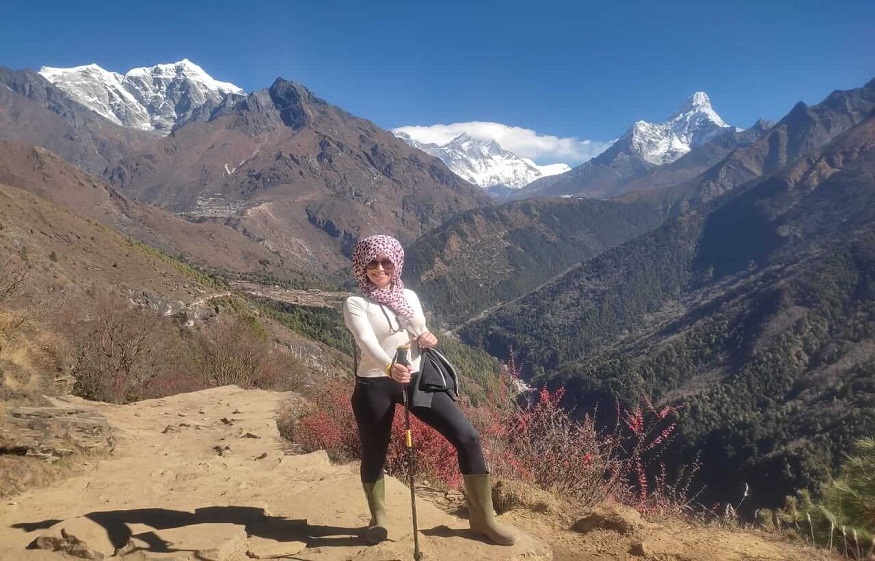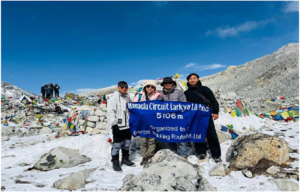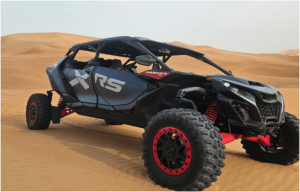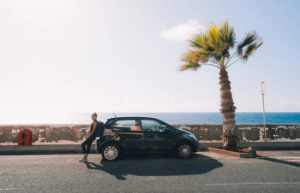Do You Need Travel Insurance for Everest Base Camp? Yes—Here’s Why

The trek to Everest Base Camp (EBC) is a lifetime adventure, yet it carries certain risks due to the rough terrain, high-altitude environment, and capricious weather. That’s why travel insurance isn’t just a good idea, it’s essential. Trekkers may not think about insurance at first, but the nature of trekking in a remote and arduous place like this makes it a safety essential. This is why you need travel insurance for Everest Base Camp.
Everest Base Camp Trek The biggest risk on the trek is medical emergencies, and first and foremost. When trekking to high altitudes, trekkers pass through the elevation range of altitude sickness, which can be fatal. The symptoms vary from mild headache to severe complications like pulmonary edema, cerebral edema, etc. If you become sick, your trek may be interrupted, and your only real choice may be emergency evacuation. Helicopter rescues from the Everest region can be dauntingly expensive — often tens of thousands of dollars — and if you don’t have insurance, you might end up paying that bill yourself.
The remote location of the trek also makes medical facilities scarcer. Although some basic health services exist in towns like Namche Bazaar, more advanced care can only be accessed by returning to larger cities like Kathmandu. Even in the case of minor injuries, delays or complications can complicate and make it more expensive to seek medical attention. Comprehensive travel insurance encompassing medical evacuation also ensures that if you need to be treated, you will be taken care of promptly, if at all!
Having travel insurance also means coverage in the event of cancellations or delays. The weather in the Himalayas is an unpredictable force, especially during the monsoon or the winter months, and can make the trek take much longer than planned. Flights into and out of the region can also be disrupted or canceled, isolating trekkers in Lukla or elsewhere. And if those delays derail your plans, then your travel insurance can reimburse you for the cost of accommodation, replacement flights, or trip cancellation altogether, so that you don’t lose out even more financially. For example, if you have to shorten your trip because of unforeseen circumstances, insurance will help recover costs from unused portions of your trip, like hotels, trekking permits, or booked tours.
Lost or stolen luggage is yet another scenario where you may want to think about getting insurance for your EBC trek. When you’re hiking between remote villages, your bags might be taken care of by porters and can therefore be more prone to breakage or loss. Travel insurance can reimburse you for lost gear, including clothing, cameras, or trekking gear. Insurance can also cover the expense of replacing important documents, such as passports and visas if they are lost or stolen while you are trekking.
Other travel insurance plans also cover trip interruption or cancellation in addition to emergency medical evacuation. If you suddenly have to leave the trek for reasons like family emergencies, work commitments, or other reasons, insurance can assist you with covering the non-refundable costs, acting as a financial safety net. This coverage provides reassurance that if something goes awry, you won’t find yourself in a position where you’re financially stranded or facing a significant setback.
In addition, personal liability insurance must be included if you are providing a guiding service or hiring a porter. Although it’s rare, accidents can occur on a trek, and if you were to injure someone or damage property while on one, you could be liable. When you have unwittingly caused these sorts of situations, but you have personal liability coverage, it can save you from facing the financial consequences of such.
Everest Base Camp Treks Finally, trekking insurance will also provide you with access to a 24-hour, 7-day-a-week emergency assistance hotline. This is invaluable if you run into any difficulties during your travels, as you can receive real-time guidance or logistical assistance. We have this support, whether it mentions emergency evacuation, locating the nearest hospital, or assisting with unwanted delays, which is highly beneficial, especially if you are trekking to a far-flung area like Everest Base Camp.
Ultimately, getting travel insurance is critical to success on the Everest Base Camp trek. The risks associated with high-altitude trekking, the likelihood of the need for a medical emergency evacuation, unexpected delays, or a lost bag all mean that insurance is a must-have. Without it, you could be facing some serious financial ramifications and increased stress in an already difficult setting. By purchasing the right travel insurance, you can hike worry-free, and if an unforeseen event were to occur, you’ll be covered.
For the trekkers who are heading for the EBC, this article will be all about travel insurance.
The Everest Base Camp (EBC) trek is an exciting trek; however, it also comes with risks due to the rugged terrain, erratic weather, and high-altitude environment. That’s why one of the critical steps in preparing for this bucket-list trip will be getting travel insurance. Although the hike itself looks like a dream, verified, unforeseen elements similar to medical emergencies, cancelled flights, or lost luggage can turn your expertise into a tense affair in moments. Well, travel insurance offers you the big picture financial protection and peace of mind, covering you in the event of an emergency or unforeseen traveler disruption. Also, besides the essential medical and evacuation coverage, travel insurance for the EBC trek can help protect against cancellations, lost gear, or trip interruptions due to weather delays or accidents. So you can focus on the stunning views, amazing scenery, and culture of your trek with the confidence that you are ready for anything that might come up while trekking.
What is covered by Travel Insurance for Everest Base Camp Treks?
Mount Everest base camp Trek Getting the right travel insurance can give strong coverage across many areas when trekking to Everest Base Camp. Above all, medical coverage, most important since there are not many medical personnel in that region. This includes emergency medical treatment and hospitalisation for sickness or injury sustained during the trek. It should also cover emergency evacuation, which can be expensive if you need to be airlifted to a medical facility in Kathmandu or another big city. Many insurance policies will extend to cover trip cancellations or interruptions by unforeseen events such as bad weather, injury, or personal emergencies. Some plans will even cover the costs for delayed flights or lost baggage that can occur while traveling through remote mountain airports such as Lukla. Another critical element is coverage for personal liability, which protects you if you accidentally damage someone else’s property or hurt someone. Some policies also provide coverage for lost or stolen gear, which is particularly important when traveling with pricey camera gear, trekking boots, and other must-have items. By selecting appropriate insurance, you can financially protect yourself on all these fronts so you can have fewer worries and enjoy the trek.
Why You Should Have Medical Coverage on High-Altitude Treks
The hike to Everest Base Camp takes you to elevations above 5,300 meters, or 17,000 feet, where altitude sickness is a very real threat. High-altitude trekking puts pressure on your body, and acute mountain sickness (AMS) symptoms , which range from headaches and nausea to dizziness and fatigue, can hit trekkers without warning. In its more severe forms, AMS may progress to high-altitude pulmonary edema, HAPE, or high-altitude cerebral edema, HACE, both of which can be deadly and need immediate treatment. That’s why having medical coverage in your travel insurance policy protects you financially in the event that you require treatment for these illnesses. Trekking at high altitudes poses an increased risk of injuries like sprains, fractures, and exhaustion, all of which could require medical assistance. Because medical facilities are few and far between along the trail, it pays to have insurance that covers medical costs. Most policies will also cover evacuation to a hospital should your condition deteriorate — a charge that could be tens of thousands of dollars. Comprehensive medical coverage ensures you have access to necessary medical care, whether it be routine or emergency, allowing you to enjoy the trek without the fear of financial disaster from illness or injury.
Let Insurance Keep Your Life of Emergency Evacuation
Everest Base Camp One of the greatest risks of trekking to Everest Base Camp is the emergency evacuation. The high-altitude conditions and rugged terrain can mean that trekkers find themselves in need of immediate medical attention. Whether you experience acute altitude sickness, get injured or ill, receiving medical assistance in such remote terrain can be difficult. If someone needs to be transported to a hospital, helicopter evacuations from places such as Lukla or Namche Bazaar are usually the only option, and the price is exorbitant, often in the thousands of dollars. Without adequate emergency evacuation and a way to cover costs, you could be stuck with a hefty bill. Unlike travel insurance that has coverage only for life-threatening emergency evacuation, helicopter pickup or transport to the nearest facility will be taken care of. This kind of coverage is especially important because delays or failure to evacuate quickly can exacerbate medical conditions. This provides the peace of mind that if the worst happens, you will not have to deal with the financial costs of emergency medical transport. Besides paying for the evacuation itself, the insurance will typically pay for the cost of medical treatment once you reach the hospital, making sure you’ll receive the care you need, no matter where the emergency takes place.
Trip Cancellation and Interruption Coverage
In case of an unexpected event that can impede your scheduled Everest Base Camp trek, such as delays due to severe weather, family emergency, or illness prior to or during your trek. And one other component of travel insurance, trip cancellation and interruption coverage, is absolutely crucial to protecting your investment in the event you’re unable to complete your planned trip. For instance, if you need to cancel your trek because you’re sick or there’s a family emergency, cancellation coverage refunds nonrefundable costs of your trip, like airline tickets, trekking permits, and hotel bookings. Likewise, trip interruption coverage makes sure that if you need to cut your trek short on account of an emergency or an illness, you are covered for the unused portion of your trip, including accommodations or guided services that you lose. This kind of coverage also applies to weather-related delays — if you can’t get to your destination or your flights are grounded, insurance can help pay for additional accommodation (and rescheduling) costs. This coverage gives trekkers the ability to plan their trip with confidence that they will not risk losing money because of unforeseen incidents and that they’re financially protected in the event they cannot go or have to come home early.
What to Do If Your Gear Is Lost or Stolen: Insurance Will Cover Your Equipment
Himalayan Base Camp Trek From trekking boots and backpacks to cameras and electronics, on the Everest Base Camp trek, your gear is key to your comfort and your safety. But because the area is remote, the potential for lost, stolen, or damaged gear is all too real. When trekking, porters take care of most of the heavy luggage, and sometimes it gets lost or misplaced along the way. At high altitude, trekking also adds further risks, for example, severe weather that can wear and damage your equipment. Explore travel insurance that covers lost or stolen gear to safeguard your most prized possessions. If you were to lose your camera equipment en route to the summit, your insurance would cover your replacement cost for your camera, for example. And if your backpack or hiking boots are irreparably damaged, you can recoup the expense of replacing them. Some insurance plans offer coverage for the theft or damage of electronics while you’re traveling, as well. When you don’t have to worry about the cost of the necessary gear that you need for your trek, this kind of protection allows you to focus on the cleaning. You should maintain a record of the items you’re carrying and ensure that they’re covered under your policy.
Coverage for Adventure Sports: Tracking, Climbing, and More
Trekking to Everest Base Camp (EBC) is an exciting, yet physically & technically tough journey requiring travel insurance of a specific type due to the inherent dangers involved with high-altitude trekking and mountaineering activities. Because standard travel insurance will not cover such high-risk activities, it’s important to choose a plan that covers adventure travel or high-risk activities.
Trekking in isolated regions, especially at high altitudes, poses many dangers, including altitude sickness and injuries from falls or accidents while walking on rocky ground. Moreover, the EBC trek itself is not a technical climb, but some trekkers might want to push their limits and go higher at or close to base camp, or participate in climbing activities. Trekking and climbing accidents, medical emergencies, and evacuations will be covered by insurance providers that offer high-risk coverage.
Make sure your policy covers emergency evacuation — whether by helicopter or otherwise — as standard medical coverage may not extend to such remote regions. Also, check if you are covered for any climbing activity, summitting a smaller peak, or even partway up Everest while partaking in this climbing environment. Read the fine print carefully, too, to make sure your coverage covers the particular requirements of your trek and intended activities.”
Best Way to Arrange for Travel Insurance Modifications for EBC
Everest Base camps Here’s how to choose the right travel insurance provider for your Everest Base Camp (EBC) trek. Choosing the right insurance can seem daunting, but it is essential to ensuring you’ll be covered in the event of a medical emergency. Search for insurers specializing in adventure travel coverage, particularly high-altitude trekking and mountaineering in Nepal. The best options are established companies specializing in adventure travel insurance because you will need coverage for medical evacuation, emergency medical treatment, and cancellation or interruption due to unforeseen events.
When choosing a provider, be sure to read the policy fine print when inquiring that it specifically covers trekking in the Everest region, particularly the high-altitude challenges and potential dangers involved. Policies that include 24/7 emergency help and medical evacuation are essential in remote places like Everest Base Camp. Some companies also offer specialty coverage for trekkers, which can also come with added benefits, such as trip delays, trip interruption, and gear that is lost or stolen.
Remember that it’s important to look at policies from different providers to make sure that you are paying a fair price for the most comprehensive coverage you can get that suits your needs. Be aware that cheap policies may provide little cover, so select an option that covers the hazards of trekking in such a remote and challenging location.
How to Select the Right Trekking in Remote Areas for You
If you are trekking to Everest Base Camp, focus on ensuring your travel insurance is designed specifically for geographical locations that include remote trekking environments. The relative inaccessibility of the EBC region, along with high altitude and unpredictable weather, makes trekking here far more dangerous than it could be a standard vacation.
You want to find an insurance policy that covers high-altitude trekking and specifically states that it includes trekking above 3,000 meters. Everest Base Camp is located at an altitude of 5,364 meters (17,598 feet), so be sure to check that your insurance policy covers this.
Also, make sure the policy provides for emergency evacuation; getting medical care or being airlifted out of Everest Base Camp can be very costly without insurance. Trip cancellation or interruption coverage is also vital for unforeseen interruptions, like delayed flights or an unexpected illness. Check if your policy includes coverage for personal gear in case of loss or theft to make sure you’re covered. This is especially the case if you are planning on bringing along specialized gear like cameras, trekking gear, or even climbing gear.
Lastly, your insurance plan should include medical coverage that covers altitude sickness treatment and hospital evacuation. And make sure that in case of serious injury, illness or death, your insurance provider will cover repatriation because getting transported back to your home country from a remote location can be troublesome,” he explained.
Travel Insurance Restrictions Applicable to the Everest Area
Everest Base Camp trek cost Travel insurance is essential for those of you trekking to Everest Base Camp, but it’s also important to know what exclusions there may be that could limit your coverage. Many standard travel insurance policies exclude high-risk activities, such as mountaineering, climbing, or trekking at extreme altitudes, all common in the Everest region.
Policies, for example, may not cover injuries incurred while climbing above Everest Base Camp, summiting the surrounding peaks, or participating in activities deemed riskier than regular trekking. Coverage for pre-existing medical conditions, for example, is often excluded, so communicate any health issues to the insurance company before buying a policy.
Plus, not every policy will cover cancellations or delays related to weather. Since flight disruptions due to adverse weather happen frequently in the Everest region, be sure to verify that your policy includes flight delays or trip interruptions related to bad weather.
Some policies may also exclude coverage for incidents that occur while trekking off the established trail or outside the prescribed trekking zones. As always, read the fine print to make sure your insurance policy permits whatever you plan to do on your trek.
Travel Insurance Cost For Everest Base Camp Trek
Everest Base Camp (EBC) trek travel insurance is subject to various factors: the duration of the trek, coverage level, and the insurance provider. For a 12-14 day trek, in general, a complete insurance policy will cost you from $100 to USD 250. It can go up if you intend to make your hike longer, engage in extra activities such as climbing, or have particular medical requirements.
It may be tempting to choose the less expensive plans, but it’s important to make sure that the coverage includes all-important perks like emergency evacuation, medical coverage, trip interruption, and coverage for high-altitude trekking. Policies with minimal coverage, or those intended for generic travel, may not cover the dangers involved in trekking in the Everest region.
And look for an insurance policy that offers 24/7 assistance services, which is especially helpful in remote areas such as EBC. By comparing prices, be sure to examine the deductibles, coverage limits, and exclusions to make sure you are getting the most for your money.
Just remember, the price of an emergency without insurance can be far greater than the cost of a policy. Considering that trekking to Everest Base Camp can potentially be dangerous, paying for travel insurance is a small price to pay for your safety and your peace of mind.
Summary: Health, Safety, and Investment on the EBC Trek
One of the most vital things you can do in preparing for the Everest Base Camp trek is to get appropriate travel insurance to cover yourself and your investments. From medical emergencies to canceled trips, lost gear, and emergency evacuations, it offers a financial safety net in the face of the unexpected. The Everest region’s outsized exposure and also strict environment make trekking here riskier than your ordinary vacations, and the wrong coverage might leave you susceptible to steep out-of-pocket costs.
Trek To Base Camp Mount Everest. Choosing an overall travel insurance plan ideal for Himalayan trekking will allow you to have coverage against the challenges of high-altitude conditions and rugged terrain. When you are going on the adventure of a lifetime, travel insurance means that you can concentrate on enjoying the trek rather than thinking about what to do if things go wrong.
Ultimately, as travel insurance when trekking to Everest Base Camp is not a luxury, it is an investment that is worthwhile as it will protect your health and well-being as well as your finances. But it helps you in enjoying your trek more confidently, knowing that you are ready for any exigencies. Have a question or special request? Email [email protected] or connect with us via WhatsApp at +977 9866007038.






